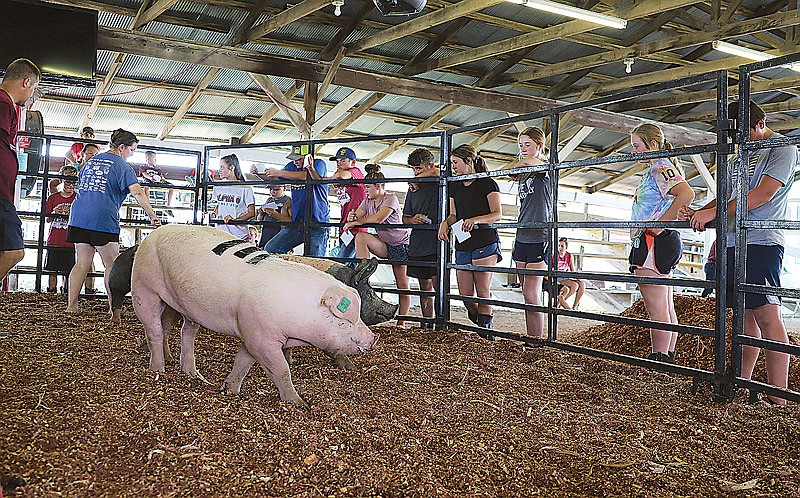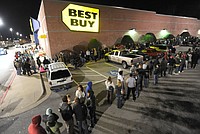Livestock judging is more than just picking out the prettiest hog or steer.
That's what youths discovered Wednesday morning at the Jefferson City Jaycees Cole County Fairgrounds barns.
Brittany Carrender, the livestock judging superintendent for Cole County 4-H, said in order for the county to send a team to the competition at the state fair, a competition takes place at the local level.
"We have experts in judging cattle and swine talking with the youth about what they need to look for such as muscle, balance and structure of an animal," Carrender said. "Last year, COVID messed things up, but we're glad to get back to having this again this year."
She said youths learn about what makes a good animal that will make it to market.
"It helps them to make a better decision on what animals they'll bring out to show at the fair and other competitions," she added.
Carrender said the lessons learned during the competition aren't just about animals.
Livestock judging is about being able to make quick decisions so youths learn self-confidence, assertiveness, leadership, public speaking skills and an appreciation for concise communication.
"They are required to give oral reasons for the decisions they make while judging," Carrender said. "They have to defend the choices that they make in a respectful manner. There's special terms that they have to use - you need to know the parts of the animal and how they work together, even when they're moving in the arena or standing still."
Photo Gallery
Black Friday
Shoppers waited outside stores in hopes of getting good deals Thursday night and Friday morning.
Gretta Carrender, of Osage Bend 4-H, has competed the past few years and said being able to give reasons for her judging decisions was the most important thing she took away from the competition.
"That's something you don't think about when you're judging livestock," Gretta said. "You have to tell why you picked what you picked."
Most of the youths in the competition began showing their animals at the fair at a young age. That's the case with Zachariah Bonnett, of Wardsville, who began showing when he was 8 years old. He and his brothers spend nine hours each day working with their steers.
"I've been judging just as long as I've been showing steers," Bonnett said. "My mom did it in Indiana, and my grandparents raise show steers, so they want to see us do it. It's helping me because the money from my steer sales is going into my college fund. We've learned a ton and had buddies who have passed their knowledge down to us. We just want to keep sharing that."
Organizers said the youths learn that how to judge is the opposite side of the coin from showing. They must evaluate an animal and compare it to others. Each judge may have a different view, so there is no right or wrong answer; it's your ability to evaluate and express yourself.
Under 4-H rules, youths are allowed to show animals until they are 21. That was the plan for Adeline Thessen, of Taos, who is a sophomore at the University of Missouri in Columbia. She also has been showing and judging since she was 8.
"It's brought me confidence because you have to give your reasons for picking an animal in a timed setting and be able to quickly and concisely defend your decision," Thessen said. "We raise beef cattle at home, but you also have to judge hogs, goats and lambs so you learn about all species. The cuts of meat are very important, especially in market animals. You look to see if they are over or under finished. Then you get hands on them you feel down their top line to see if they are on the fatty side."


